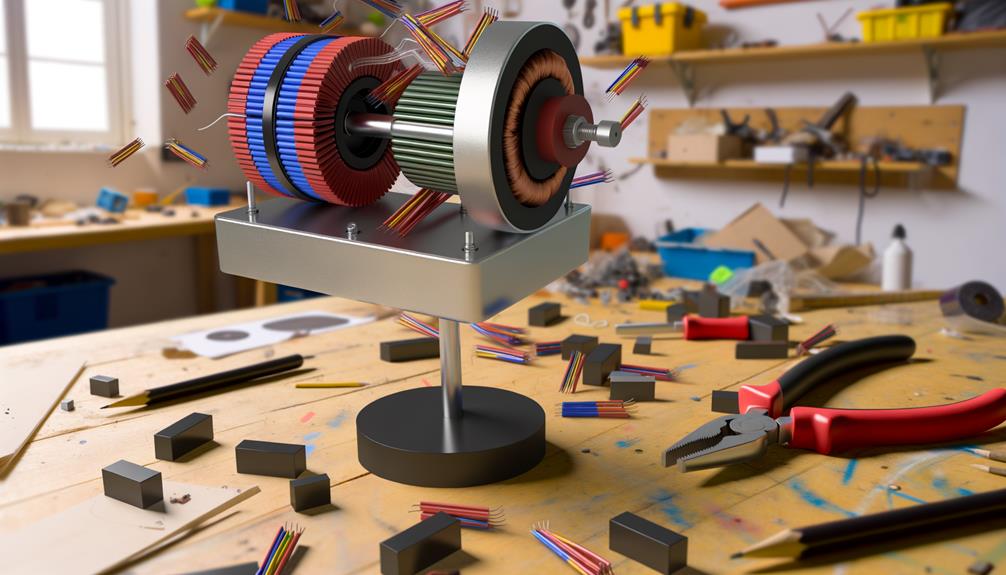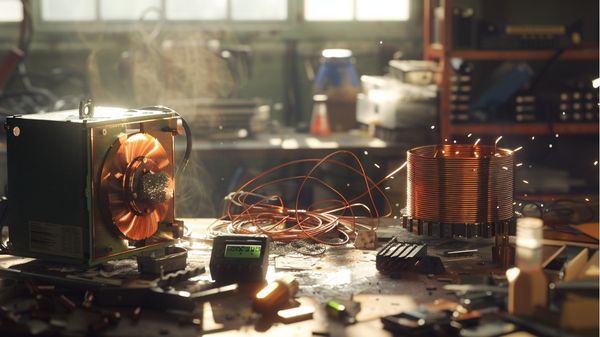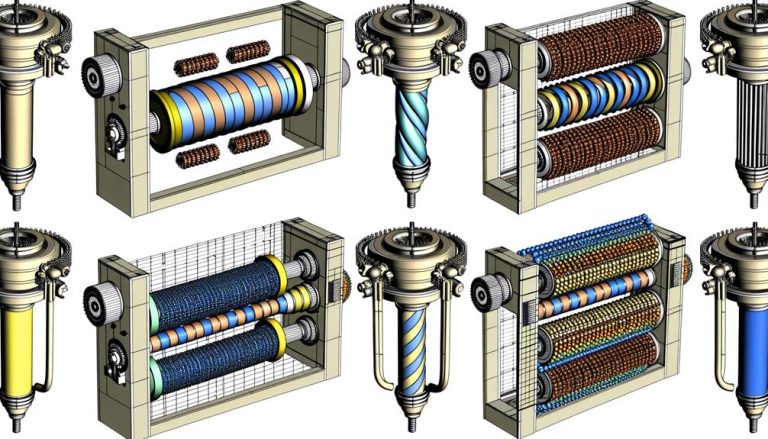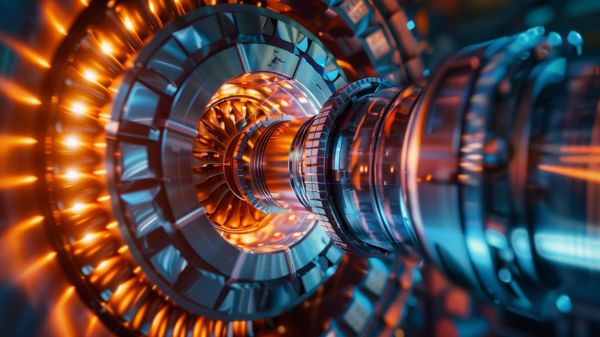Building and maintaining a magnet-powered generator involves unique challenges that can hinder its efficiency. Common issues include magnet misalignment, insufficient magnetic force, and wear on electrical coils. Addressing these problems requires a systematic approach to diagnose and fix faults effectively.
This discussion will explore these pitfalls and offer practical solutions to improve the generator’s longevity and output. We’ll also consider how to apply these interventions in various configurations and environments to meet specific energy needs.

Key Takeaways
- Check for misalignment of rotor and stator to prevent inefficiencies and unusual vibrations.
- Inspect bearings for noise and wear, replacing as needed to ensure smooth operation.
- Test magnet strength and replace weak magnets to maintain optimal generator performance.
- Examine coils for damage or insulation issues, repairing to prevent power fluctuations.
- Ensure all electrical connections are secure and properly insulated to avoid output instability and safety hazards.
Introduction
Magnet-powered generators utilize the principles of electromagnetic induction to produce electricity. These devices have gained popularity among DIY enthusiasts due to their perceived efficiency and sustainability.
These generators harness magnet theory, where the interaction between magnetic fields and conductors generates electrical current. This method is integral to advancing renewable energy initiatives, as it promotes energy efficiency and reduces reliance on non-renewable power sources.
There are various generator types that suit for DIY projects, each with unique configurations and power outputs. These range from simple hand-cranked models to more complex arrangements involving multiple magnets and coils.
The choice of design greatly impacts the generator’s efficiency and its ability to integrate seamlessly into existing power systems. For individuals passionate about sustainability and autonomy, building and maintaining their own magnet-powered generator offers a practical solution.
It not only provides an opportunity to engage with cutting-edge technology but also empowers users by giving them control over their energy production. This aligns with a broader movement towards self-sufficiency and environmental responsibility, making magnet-powered generators a cornerstone in the landscape of DIY renewable energy projects.
Understanding Your Magnet Powered Generator
Building and maintaining a magnet-powered generator requires a solid understanding of its fundamental components and how they function collectively. Key elements include various magnet types, coil configurations, rotor designs, and stator functions, all integral to the process of energy conversion.
Magnet types like neodymium or ferrite affect the strength of the magnetic field and therefore the efficiency of the generator. Coil configuration, usually copper wire wound around a core, is crucial for inducing electromotive force as the magnetic flux changes. This process is central to converting mechanical energy into electrical energy.
Remarkably, neodymium magnets provide temperature stability and ideal magnetic properties, enhancing the generator’s overall efficiency in applications like wind turbines.
Rotor designs, which can vary greatly in shape and size, are designed to rotate within the magnetic field created by the stators. This rotation is critical for energy conversion, as it facilitates the necessary interaction between the magnetic field and the coils.
Stators, often misunderstood, serve not just to hold the coils, but to effectively channel the magnetic flux through the rotor. Their design and placement directly affect the generator’s output by maximizing the flux linkage with the rotor.
Understanding these components and their interrelationships is essential for anyone looking to enhance their magnet-powered generator’s performance and achieve sustainable energy liberation.
Common Issues and Troubleshooting
Most operators frequently encounter mechanical, electrical, and connectivity issues.
Mechanical problems often involve wear on moving parts, while electrical issues usually stem from poor power generation or faulty wiring. To tackle these, thoroughly check for connection and configuration errors and ensure all components are aligned and functional.
Understanding the principles of magnetic power generation is essential for diagnosing and resolving issues related to the magnetic field’s interaction with the coils. Proper alignment and high-quality magnets are key to maximizing efficiency and preventing common electrical problems.
Mechanical Problems
Mechanical issues such as the misalignment of components and bearing failures are frequent obstacles that can markedly hinder performance. Precise alignment of all mechanical parts is crucial to avoid increased wear and system failures. For bearings, regular inspection and maintenance are essential to prevent early failures and ensure the generator’s longevity and reliability.
Misalignment of Components
Amid the operation of DIY magnet-powered generators, misalignment of mechanical components often manifests through distinct symptoms such as unusual vibrations and a noticeable decline in power output.
- Rotor Alignment: Check and adjust to reduce vibrations.
- Stator Positioning: Verify ideal placement for efficiency.
- Vibration Reduction: Implement stabilizing adjustments.
- Performance Impact: Assess and rectify misalignments.
- Troubleshooting Techniques: Utilize precise tools and methods.
Bearing Failures
Bearing failures represent a critical issue in the maintenance of DIY magnet-powered generators, often indicated by increased noise and heightened friction during operation.
Selecting ideal bearing materials and implementing precise installation techniques are key. To prevent failures, it’s crucial to evaluate load capacity, follow strict maintenance schedules, and set proper replacement intervals. These steps ensure efficient generator functionality and extend its lifespan.
Electrical Problems
In the domain of DIY magnet powered generators, electrical issues such as inadequate magnet strength and coil damage are prevalent and can considerably impede performance. Proper assessment of magnet strength is essential, as insufficient magnetic force results in inadequate generation of electrical power. Similarly, inspecting coils for any signs of wear or damage is imperative for maintaining the integrity and functionality of the generator.
Inadequate Magnet Strength
Experiencing low voltage output from a magnet-powered generator often indicates inadequate magnet strength, a critical aspect that can hinder the device’s efficiency and performance.
- Magnet Selection: Choose higher grade magnets for enhanced performance.
- Efficiency Testing: Regularly assess magnetic efficiency.
- Strength Measurement: Utilize tools to measure magnetic field strength.
- Magnetic Field: Optimize the arrangement for maximum field impact.
- Generator Performance: Monitor and adjust to maintain peak output.
Coil Damage
Following the discussion on inadequate magnet strength, another significant issue that affects the performance of magnet-powered generators is coil damage. Symptoms like intermittent power and overheating can often be due to faulty coil insulation affected by thermal expansion or voltage changes. Effective troubleshooting involves checking for insulation damage and using precise winding techniques to avoid magnetic saturation and improve durability.
Connection and Configuration Errors
A magnet-powered generator’s performance can be severely compromised by poor electrical connections, which often manifest as fluctuating output levels and occasional sparks.
The reliability and efficiency of the generator hinge on meticulous attention to connection types, wire gauge, and insulation materials. Confirming that connections are both mechanically secure and electrically conductive is vital for maintaining circuit stability and preventing energy loss or potential hazards.
Here are some key points to address connection and configuration errors:
- Connection Types: Utilize appropriate connectors for your setup. Screw terminals, solder joints, or crimp connectors are preferred based on the mechanical and electrical demands.
- Wire Gauge: Select wires that can handle the anticipated current load. Undersized wires can overheat, leading to insulation failure and short circuits.
- Soldering Techniques: Employ proper soldering practices to guarantee strong and conductive joins. Avoid cold solder joints which can lead to intermittent connections.
- Insulation Materials: Use high-quality, durable insulation to protect wires from environmental damage and to prevent electrical leaks.
- Circuit Stability: Regularly test the continuity and integrity of your wiring to confirm stable operations and adjust as necessary to mitigate any potential issues.
These steps will enhance the overall performance and safety of your DIY magnet-powered generator.
Regular Maintenance Tips
Regular maintenance of your magnet-powered generator is fundamental to guaranteeing its efficient operation and longevity. Adhering to a structured maintenance schedule is imperative. This should include routine inspections that focus on magnet maintenance, particularly checking for any signs of wear or corrosion which could impact the magnetic fields and efficiency of your generator.
Lubrication techniques also play an essential role in the maintenance process. Proper lubrication of the moving parts reduces friction, thereby preventing excessive wear and tear. It’s recommended to use only specified lubricants that are suitable for high-performance machinery to guarantee ideal results.
Electrical testing is crucial as it checks continuity and insulation, identifying potential circuit failures. It helps detect electrical shorts or broken connections, ensuring the generator’s power output and safety.
Furthermore, mechanical checks are necessary to guarantee all fittings and connections are tight and secure. These checks prevent mechanical failures that could lead to operational disruptions or damage to the generator’s components.
Performance Optimization
Optimizing the performance of your magnet-powered generator not only enhances its efficiency but also extends its operational lifespan. By focusing on technical improvements and precise adjustments, you can markedly boost your generator’s output and reliability. This involves a systematic approach to modifying and enhancing key components of the generator.
Here are essential steps to enhance your generator’s performance:
- Optimize Magnet Placement: Proper positioning of magnets can greatly increase magnet efficiency by confirming the magnetic fields are aligned for maximum induction.
- Adjust Coil Windings: Fine-tuning the coil windings can help in achieving ideal electromagnetic interactions, which is vital for efficient energy conversion. Incorporating insights on electromagnetic induction can further refine this process, guaranteeing that the changes in the magnetic field are effectively utilized to generate electricity.
- Reduce Friction: Implementing friction reduction techniques in moving parts can lead to smoother operation and less wear, thereby improving longevity and performance.
- Upgrade Components: Replacing older parts with advanced materials or designs can lead to considerable performance enhancements and energy output.
- Regular Performance Checks: Routine checks and adjustments guarantee sustained efficiency and help in identifying areas needing improvement.
Safety Precautions
While enhancing the performance of magnet-powered generators is essential, ensuring the safety of those operating and maintaining these systems is equally important. Handling magnets, particularly strong neodymium types used in these generators, requires precision and awareness of their powerful magnetic fields. Proper safety gear, such as gloves and eye protection, should be worn to prevent injuries from sudden attractions of magnets to metal objects or each other.
Electrical safety is paramount. Generators produce high voltages and currents that can pose serious risks. Ensuring all electrical connections are secure and using insulated tools can mitigate the risk of electrical shocks. Additionally, it’s vital to implement emergency procedures like having a readily accessible electrical cutoff switch and maintaining clear, labeled pathways to this switch.
In instances where the troubleshooting or maintenance complexities surpass typical DIY capabilities, seeking professional assistance is advisable. Professionals can provide the necessary expertise to safely manage and resolve high-risk issues, ensuring the longevity and safe operation of the generator.
Frequently Asked Questions
Can I Use Recycled Magnets for Building My Generator?
Yes, recycled magnets can be utilized in building a generator. Confirm magnet strength comparison to optimize performance. Using cost-effective, environmentally friendly materials in your generator design is both practical and liberating.
How Does Humidity Affect Magnet Efficiency?
Humidity can accelerate magnet degradation, influencing performance through increased environmental impact. This variation necessitates specific maintenance strategies to mitigate humidity effects and sustain magnet efficiency, ensuring long-term operational stability and effectiveness.
What Types of Magnets Are Best for Power Generation?
For ideal power generation in DIY projects, neodymium magnets are preferred due to their strong magnetic fields. Alternatives include ferrite and ceramic magnets, with electromagnet designs being adaptable but requiring precise control of their magnetic fields.
Are There Legal Restrictions on Building Magnet Generators?
Building magnet generators may face legal restrictions depending on local safety regulations, permitting requirements, and energy output. Guarantee compliance with design specifications and magnet sourcing laws to avoid legal complications and promote safe, efficient operation.
Can Magnet Generators Interfere With Electronic Devices?
Magnet generators can emit magnetic fields that potentially disrupt nearby electronic devices. Variations in device sensitivity necessitate tailored electronic shielding techniques and safety precautions to mitigate generator proximity interference and guarantee operational integrity.
Conclusion
We’ve explored the multifaceted aspects of maintaining and troubleshooting a DIY magnet-powered generator. We conclude that it is vital for ensuring efficient and sustainable energy production. Regular inspections and adjustments fix misalignments, boost magnet strength, and prevent coil damage, enhancing generator performance and longevity. By following safety measures and optimization strategies, enthusiasts can enhance the reliability and output of their DIY energy solutions.




